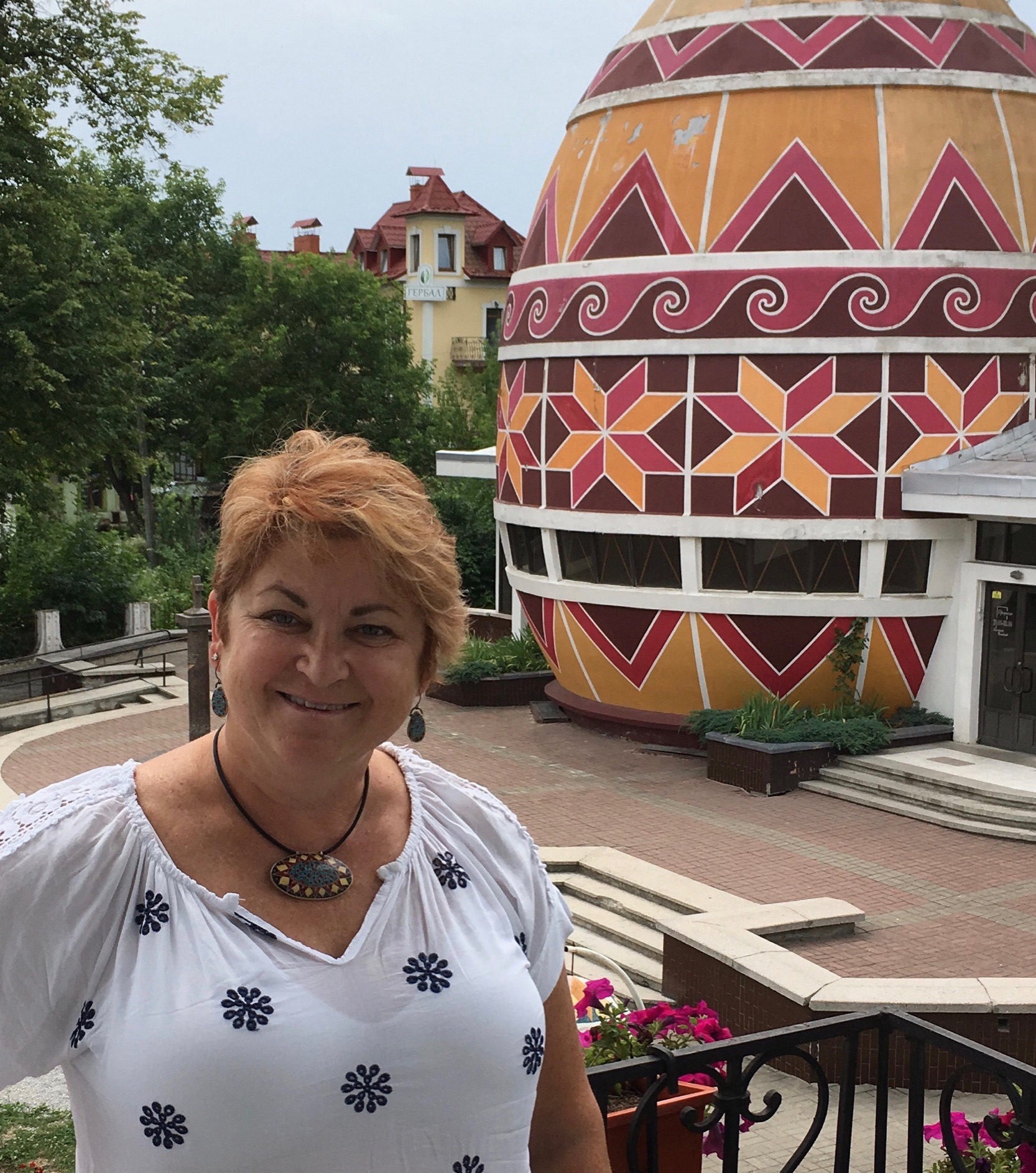Basia Andrusko
 I began making Pysanky when I was quite young–probably about seven or eight years old. It was a Easter tradition in our Ukrainian home. We would write (decorate) eggs that were blessed with other food in the Easter basket.
I began making Pysanky when I was quite young–probably about seven or eight years old. It was a Easter tradition in our Ukrainian home. We would write (decorate) eggs that were blessed with other food in the Easter basket.
My family is from the Lemkivschyna Region of Ukraine (Western Carpathian Mountains). We moved to New York when I was 7 years old. I enjoyed the cultural tradition, and the meditative process that creating Pysanky provided for me.
Several years ago, with my children now being grown, I found a renewed interest in the tradition / art, and began writing Pysanky year-round. I’ve learned new techniques and non-traditional approaches to the art (like making jewelry from the decorated eggshells) from the online community of fellow Pysanky writers.
I really enjoy recreating traditional designs, modifying them in different variations and color schemes, and also creating original non- traditional designs. The best satisfaction is seeing the joy in the eyes of the people with whom I share my Pysanky, and knowing that I am passing on a tradition to future generations.
Pysanka
Pysanka writing is a folk tradition that dates back to ancient times, practiced by many Eastern European peoples, long before Easter was celebrated. They were used as good luck tokens and the symbols and colors once carried very specific meanings and blessings.
The designs of a pysanka are not painted on, but drawn with a stylus filled with melted beeswax and then dipped in dye. This wax-resist batik method is used to layer the colors of intricate designs Ukrainian Easter Egg decorated using dyes and a wax-resist batik method.
Starting with a white egg, the wax is applied with the stylus. Those areas covered with wax will remain white. The egg is then dipped into the next color (ie. yellow). Additional lines are added, which will be yellow in the final design. A Pysanka may have anywhere from one to 5 or 6 colors layered on it. Once the final color has been applied, the wax is removed by heating the egg over a flame and wiping off the melted wax – exposing the vivd colors and pattern underneath. The finished egg is then coated with UV protective coating to preserve the colors. A finding can be attached for those Pysanky that will be displayed as ornaments.
The designs can range from very simple to extremely intricate. It can take anywhere from three hours to over 100 hours to write the design on an egg.
Almost every family in Ukraine had its own special ritual, symbols, meanings and secret formulas for dyeing eggs during the Lenten season. These customs were faithfully preserved and passed down from mother to daughter through generations, and being brought to the new world with immigrants.
Jewelry
Basia's jewelry is created on real eggshells, which are cut and shaped, then encased in environmentally safe EcoPoxy resin. They are a durable, wearable work of art.
